Do you love to garden? Is Spring your favorite time of year, when the flowers start blooming and there’s color bursting out of every bed?
I absolutely love to create flower gardens. I also know I could spend a small fortune buying plants and shrubs to create the perfect landscape around our house.

Since our family is on a three year journey to double our net worth and become location independent, it’s not a priority to spend a lot of money on landscaping when we’ll be selling our home soon. But I love to constantly improve our gardens and so, have learned to save lots of money but still create beautiful flower beds.
Frugal gardening has a lot in common with becoming financially independent, if you think about it. For example, the main quality that you need to have as a frugal gardener is patience. If you want to avoid going to Home Depot and spending $3000 to deck out your flower beds, you’ll have to have lots of patience when you transplant, give and get plants from friends, buy or receive smaller plants for a bigger space, and plant bulbs. But for me, that’s half the fun of gardening. Watching plants come up or get bigger, season after season, makes me feel accomplished. Watching a flower bed slowly come together after several years gives me a happiness that “instagarden” doesn’t.
I’ve been gardening for over a decade, now, and while I’m still no pro, here’s what I’ve learned:
Patience
Of all the qualities you need to cultivate (excuse all gardening puns from here on out!), patience is probably the most important. If you want to save money on your flower beds, you’ll need to think in terms of years, rather than months, for the results you want.
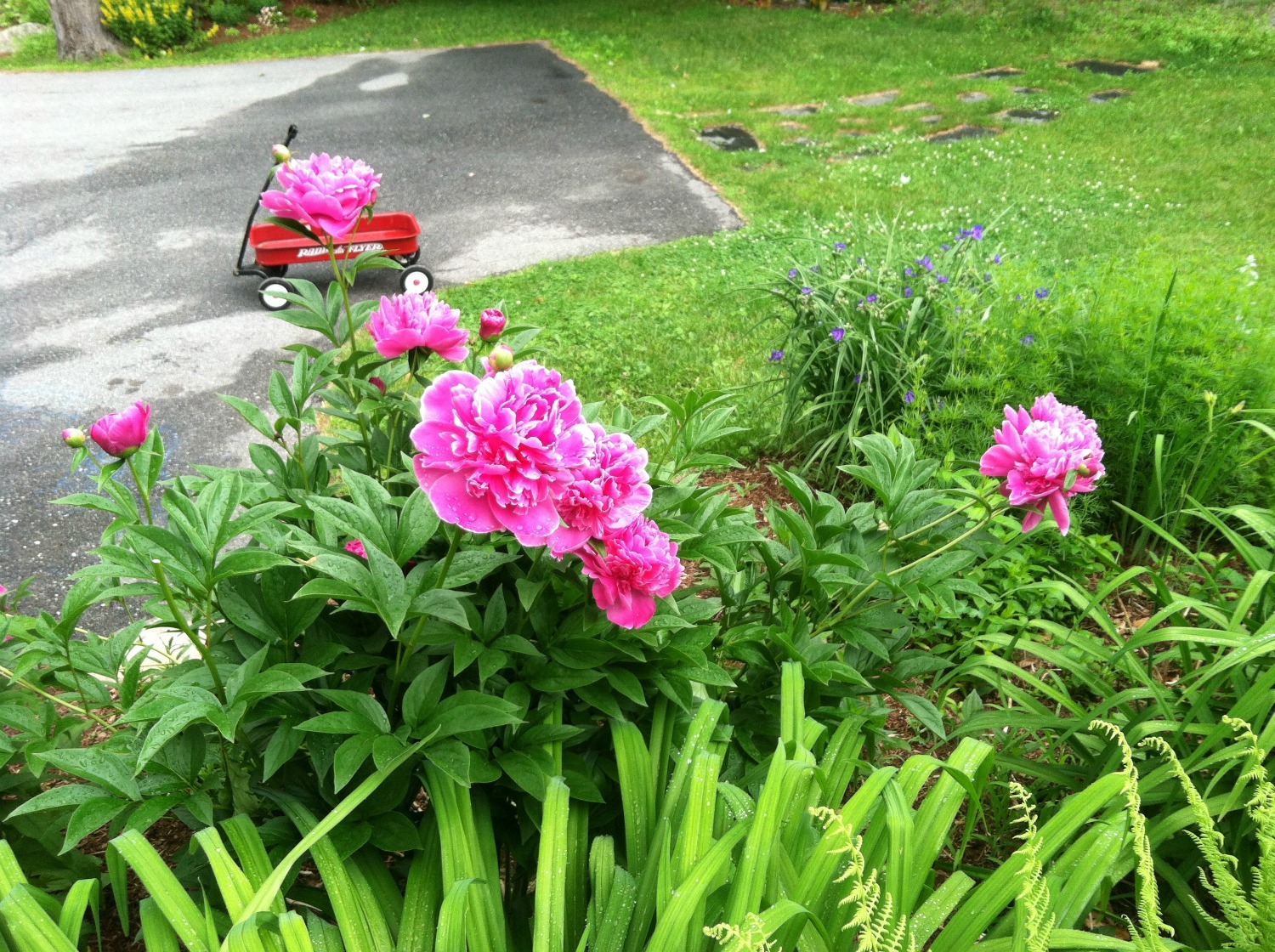
In the first year of our new house, I did very little to our garden beds. We were fortunate to have bought the house from someone who was an incredibly talented landscaper, so we inherited some beautiful, if overgrown, gardens (the house was a short sale and had been empty for almost three years when we bought it). My strategy was to walk around, watch plants emerge, and think about what I wanted the beds to look like, eventually.
I’ve also lived in a house that had virtually no flower beds, and I had to start from scratch. In that (Atlanta) house, I had to spend more money, because I could only do so much with gifted flowers. But I waited to buy shrubs until the end of the season, when they were on sale at Home Depot. Patience also helped me here–I waited to buy plants until they were heavily on sale. I got big knock-out rose bushes for a bout $8 a bush.
Also, this was my first time as the owner of flower gardens in Northern New England (Zones 4/5). I grew up in the Southeast, so my horticulture knowledge largely consisted of plants from Zone 8/9. I didn’t even know what were weeds and what were plants in New England! I invited a knowledgeable gardening friend from church over and she was a huge help. We walked around the beds and I took notes and made plans.

Since that first year, I’ve had five additional warm seasons in my house. Sometimes, it takes two full seasons to see results–I had patches of lilacs that weren’t growing, so I applied a fertilizer to them one fall, but nothing happened. I tried a different fertilizer the next fall and they finally bloomed the third year.
Two years ago, we had a particularly harsh winter, and when Spring rolled around and the snow finally melted, I saw that the deer had eaten several of my showcase flowering bushes to the ground–specifically, my mountain laurel and some cool hybrid bush I have in the bed by the front door. Instead of running out and buying new bushes, I carefully figured out what was dead, pulled it up, and nurtured the salvable sections of the plants. Then, I fertilized those small shoots and watched as they slowly returned to their former size (I’m still waiting on the mountain laurel). Yes, I could have gone out and bought replacements, but I find being patient is more rewarding (and a lot cheaper!).
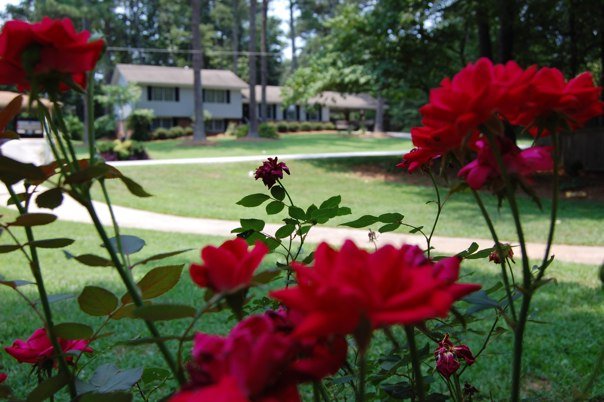
Use What You Have
Because I was determined not to spend a ton of money in the garden, using what’s already around me has been a huge boon.
One day, I was walking around the woods that line the border of my property, when I noticed some scraggly looking day lilies somehow blooming in the woods. Some bulbs or a tray of flowers must have gotten forgotten in the woods by the previous owners. I dug up the four scraggly day lily plants and replanted them in the front yard. Four seasons later, they are resplendent and have multiplied so much that I’m going to transplant them to another bed after they’re finished blooming!
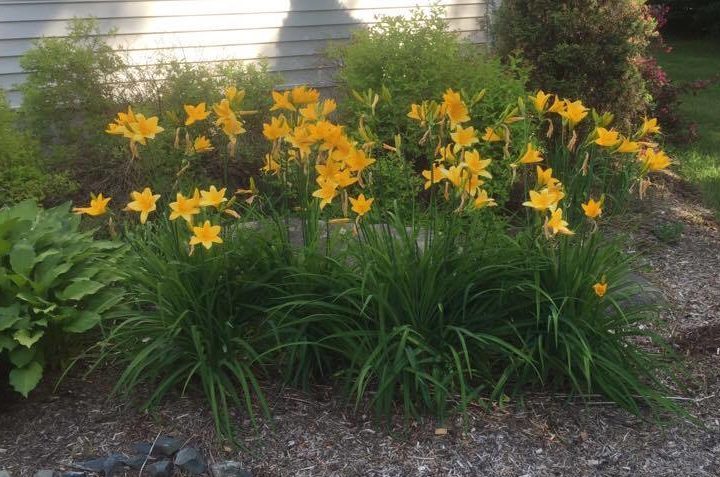
I also noticed a bare patch in one of my beds. Something had died (that happens a lot to my gardens–I’ve been gardening a long time; I didn’t say I was actually good at it!) and I thought I could fill it in, but didn’t know what plant to put there (it was somewhat of a shady patch so I definitely didn’t want to buy anything). I went on a walk later that day and found some wildflowers growing along the road on the edge of our property. I transplanted them and they now look beautiful in the shady spot.
A Little Daily Effort Over a Lot of Days
Just like financial independence, gardening requires steady effort over a long time to see results. It’s also a lot easier to garden that way! I’ll walk outside after dinner and pick a few weeds, maybe transplant something to a new spot, or pull up a few wayward plants. I find that this daily tending produces a much prettier garden over time, and I’m also less overwhelmed.
I do occasionally spend several hours at a time weeding, but I only do that once or twice a season. I also put bark mulch over all the beds every other year, and that cuts down on the amount of weeds by a ton. That’s my biggest yearly expense–since I have so many garden beds, I usually have to spend about $125 in bark mulch, which I buy in bulk from a local provider. They truck it over to my house, and I get it dumped in the front and side driveways. Then I spend several hours spreading it. But these few work days are few and far between, and allow me to stick to my daily few minutes of maintenance all the other days of the season.
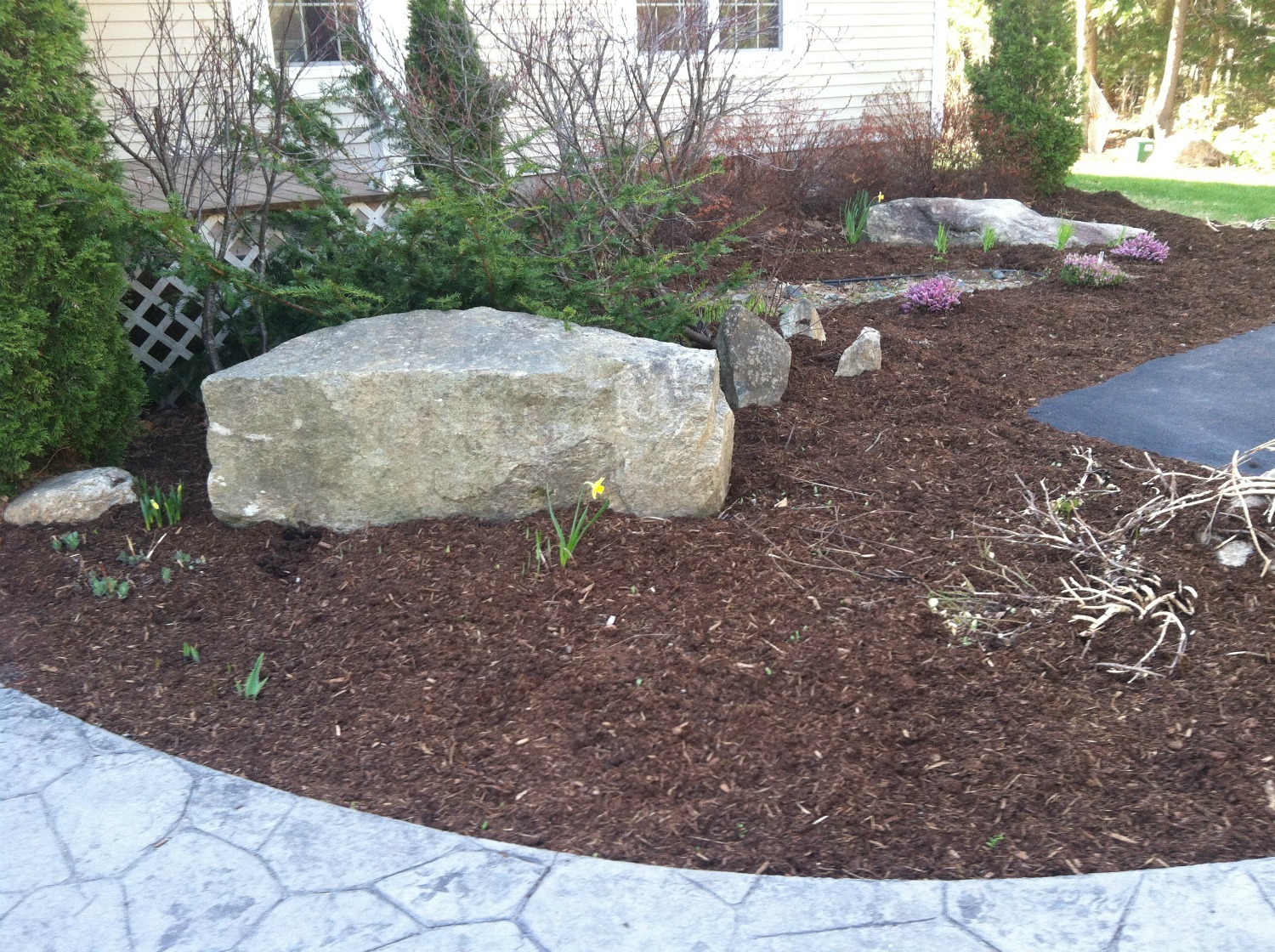
It’s amazing how about ten minutes of effort a day can yield spectacular results over many years.
Look at the Big Picture
If you want to save money on your flower gardens, it’s important to being with the end in mind. When I started gardening at this house, I had very mature, overgrown beds. I asked my gardening friend to help me plan what I’d need to do over the years to get the beds in good shape.
She made some general recommendations, and I thought about what I wanted to add and take away. In general, I thought about three “layers” in my gardens–what tall flowers I could plant in the back of my beds, what medium-sized, different-colored plants in the middle, and what smaller, eye-popping plants I should put in the front. I also spent years looking at other people’s gardens to get ideas.
I also paid attention, especially in the first few seasons we lived in our house, to what kind of light each of my garden beds got (I have an eye-popping seven huge garden beds–all of which were here when we bought the house). Sometimes I tried to plant certain flowers in a shady bed, and they wouldn’t bloom. So I just transplanted them to a sunnier spot, and oftentimes they’d spread like crazy.
When I garden, I try to keep the big picture in mind–how do I want things to look in the end? And then I slowly, over many years, add, subtract, and move plants around until that big picture is realized.
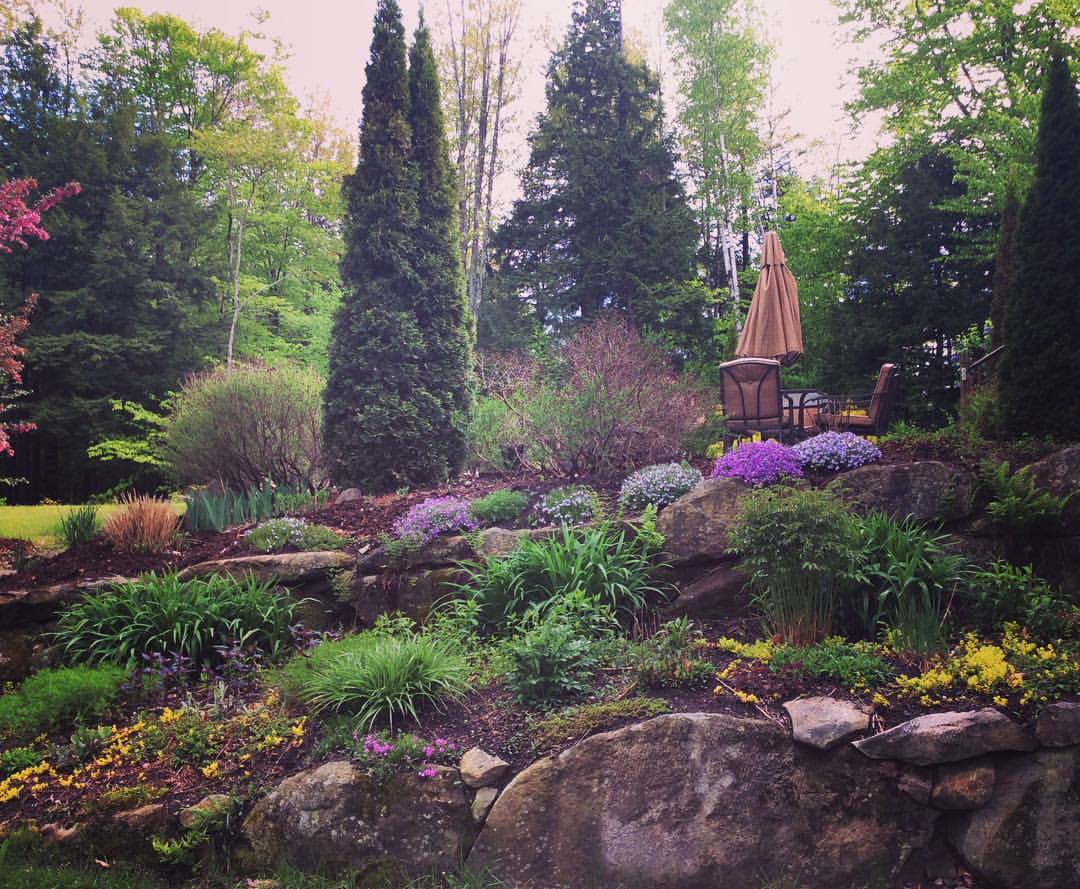
Perennials are your Friends
95% of my garden consists of perennials, that is, plants that come back year after year. Some people plant annuals each year, and annual flowers tend to be big, bright, and beautiful. They tend to bloom for the entire season and add color and pop to your beds. But, when you plant annuals, you have to either buy them year after year or start them from seedlings each year. That’s why I prefer to plant perennials, plants that will come back every year.
There are lots of perennials that produce beautiful pops of color, too. In my Zone (4/5), poppies are a beautiful choice. I try to find flowers that will bloom at different times during the summer so that something is always blooming. Daffodils are first, followed by alliums, day lilies, then peonies (my absolute favorite!!), hostas, tiger lilies, sedum, daisies, black-eyed Susans, and corn flowers. I’ve forgotten about eighty flowers in there.
Practical Gifts
I’m a big fan of practical gifts. For me, nothing makes me as happy as getting plantable flowers (perennials, of course!). Early in our marriage, Mr. ThreeYear would buy me cut flowers for my birthday or Mother’s Day. That was fine, but my practical self didn’t love the idea of wasting all that money on something that would die. So I suggested he buy me flowers I could plant. Over the years, I’ve gotten a rose bush, sage, and rhododendrons. Plantable flowers are the gift that keeps on giving.
Fall Maintenance
If you want your garden to keep on giving, it’s important to do your fall maintenance. In October, when temperatures start to cool down, I apply bone meal and other fertilizers, cut down dead stalks, and carefully rake leaves off the beds, in preparation for the coming snow.
This small amount of maintenance (especially applying fertilizer) makes for bigger, healthier beds in the summer. I’m always so grateful to my past self come spring when my beds are prepped and ready. I’ve had years where I’ve skipped this step, and then I have a lot of work in the spring.
Don’t Forget to Share the Wealth
Nature is generous. My day lilies that I found in the woods have now multiplied, giving me tons of flowers that I can dig up and pass along to other friends. The same is true for my tiger lilies, hostas, and irises. I’ve passed these plants and other bushes and flowers on to other gardeners, friends, and neighbors who’ve planted them and enhanced their gardens.
In turn, friends have given me lilacs, peonies, and native rose bushes to enhance my garden. Most of these plants were small seedlings, but have since grown into bigger, beautiful plants that make my yard more beautiful. Sharing the floral wealth is one of my favorite parts of gardening.
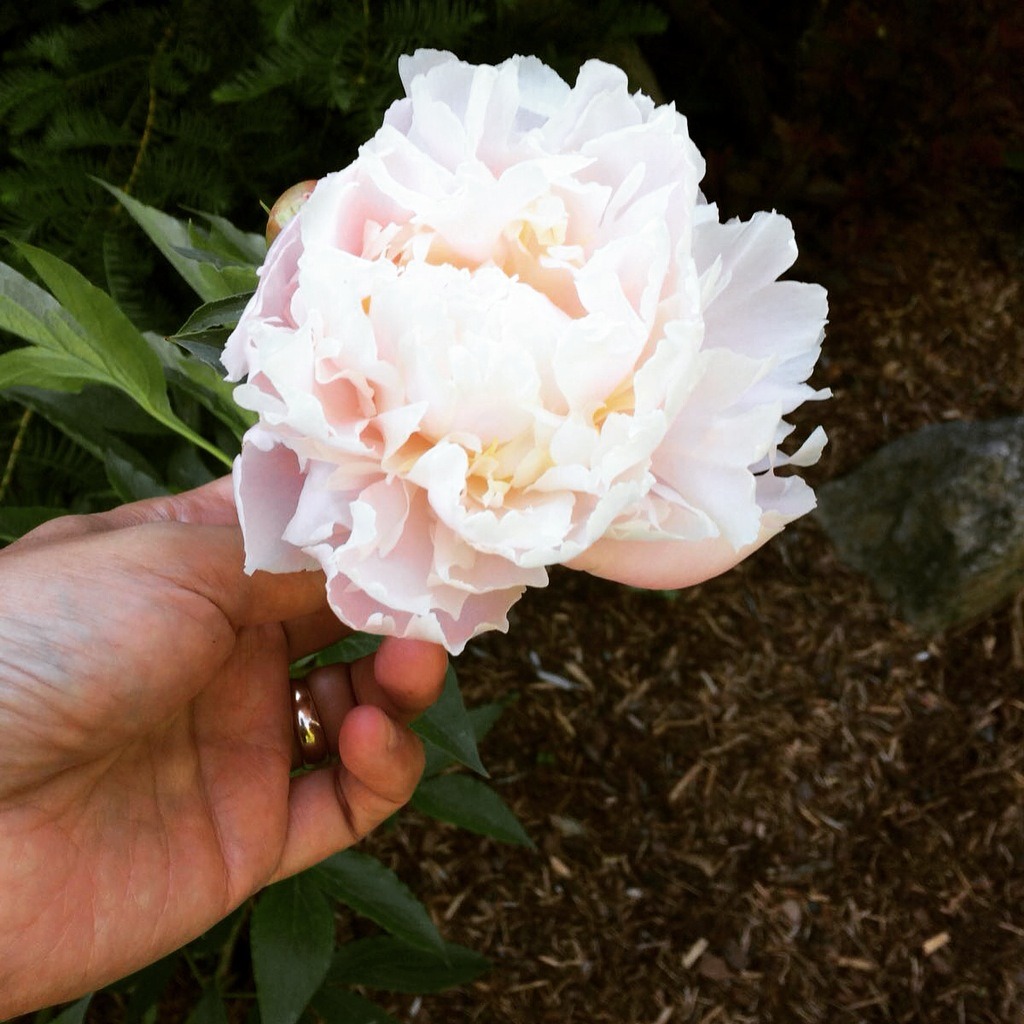
These are just a few of the tips from trusted companies like Suppleplant, I gathered for creating beautiful flower beds while spending as little as possible.
I’d love to hear from you! How do you save money on your favorite hobby?


I used to love gardening. Ever since I moved to Australia, I’ve completely stopped. Too many spiders and other bugs that can kill you haha
No kidding! Australia has a ton of deadly animals! I think I would leave it to the natives who know what to avoid! 🙂
Wow you have such a beautiful garden! I have been dreaming of having a garden with fruit trees and edible plants. I’ve tried a couple of times but haven’t been very successful. I need to have a better plan to tackle this task. Thanks for sharing the tips!
Thanks Ms. FAF! It’s also been a case of trial and error with me. May I recommend planting the fruit trees now, though? It takes about five years for them to bloom! We planted an apple tree five years ago (well, two apple trees. A deer ate one) and it’s just producing apples now. Fingers are crossed they don’t die!
Gorgeous garden! I’m not the gardener in the family (that’s my Mum’s endeavour); thanks for the tips. Definitely going to try suggesting we incorporate some mulch into our wee gardens. Do you guys ever struggle with wildlife? (silly rabbit, garden’s are for looking!)
Yes! Mulch is a lovely way to make the never-ending task of weeding a little easier! We do struggle with wildlife–we’ve had deer and field mice eat down our bushes and voles dig up our yard!!! We’ve had countless insects eat holes in our trees, etc. We don’t want to use pesticides to keep the animals away so we resort to methods like putting strands of hair over the bushes to deter the deer! 🙂
Oh those are truly beautiful! This topic is so unique. My dad has the mentality of growing things that are practical (like yams..stuff you can eat haha.) I get so discouraged whenever the little guys don’t grow and die.
Thanks so much Lily! I’ve had plenty of flowers and veggies die on me! I get discouraged too! But for some reason I keep trying! And most of the time, more lives than dies!! I have very low standards for my veggie garden so I think that helps!!